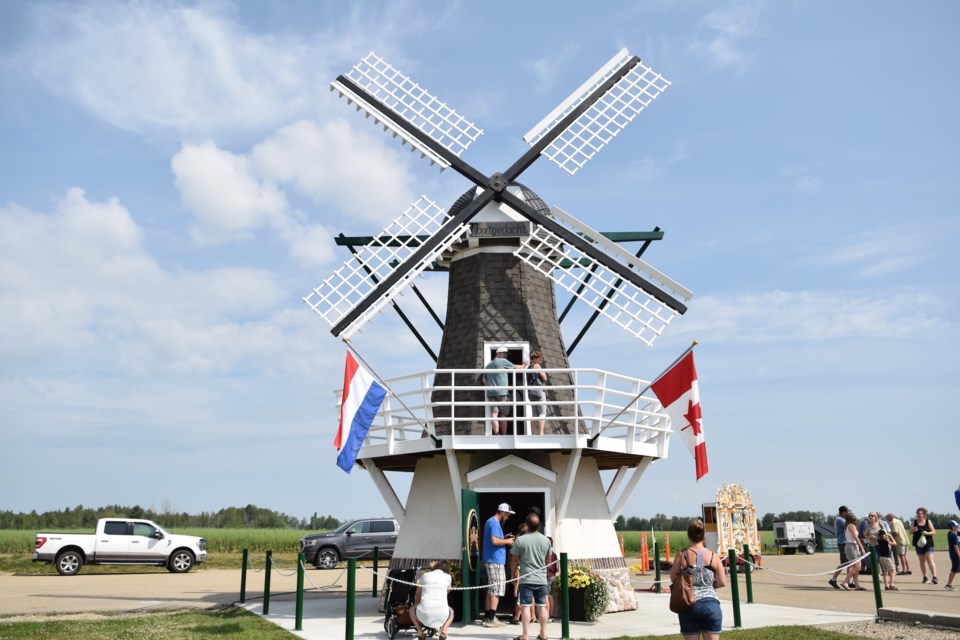BARRHEAD - If you had asked Neerlandia Historical Society chairperson Jan Harink if he believed the day would ever come when the organization and the hamlet would have a life-sized Dutch windmill, he would have said they were crazy.
Or more accurately, "Nooitgedacht".
That is what Harink said during the ribbon-cutting ceremony on Aug. 1, unveiling the over 30-foot structure to the community. The ceremony was held in conjunction with the Neerlandia Co-op’s Mid-Summer Extravaganza event.
"In Dutch, it means 'I never thought so,'" he told the crowd of several hundred. "And I never thought that we would have a windmill like this in Neerlandia."
To emphasize the difficulty, the society emboldened the work on top of the windmill.
However, Harnik said with the help of the community and local businesses, they were able to make what was a hope into reality.
The project, which was more than two years in the making, when the society learned that the Dutch Canadian Club in Edmonton were going to sell its building, the Dutch Canadian Centre, necessitating the need for the not-for-profit organization to find a new home for not only the windmill as well as an antique Dutch street organ, estimated to be approximately 100 years old.
The latter, the historical society received from the Dutch Canadian Centre two years ago.
Initially, Harnik thought getting the windmill to Neerlandia would be the difficult part.
And it was. The process, he said, organized by local builder Lambert Veenstra and included four semi-truck trailer units and a crane.
"It was unbelievable," Harnik said. "In six hours, they had it back here."
However, he said, bringing the windmill to Neerlandia was the easy part. The more challenging part of the process was to reassemble all the components of the windmill that had been separated for transport into a functioning windmill again.
Veenstra said they quickly realized that when they started to reassemble the windmill, it would be a lot more work than just putting all the pieces back together.
"The entire base had to be restuccoed, and the beams were mostly rotten," he added.
The latter, he said, were created out of newly cut cedar.
Veenstra and Harnik also noted that work on the structure is not complete.
In future phases, the historical society plans to make the windmill blades rotate, but to do so, they will need to bring electricity to the site. They also hope to add a historical display to the lower floor of the structure, transforming it into a mini-museum.
Dutch Canadian Club president Frank Stolk said they were pleased that the windmill and the previously mentioned organ went to a Dutch community.
He added that the club did not realize the windmill's condition had deteriorated to the extent it had, saying that it would help the historical society by donating $2,000 to the next phase of its renovation.
Harnik said that in Holland, windmills, in addition to their historically practical purpose — i.e., powering water pumps, grinding grain, and pressing seeds for oil — they also served, along with church steeples, to bring the community together.
"That is [Neerlandia Historical Society's] hope," he said. "[That the windmill] will be a landmark [along with Neerlandia Canadian Reformed Church] steeple and bring people together," he said.
Barry Kerton, TownandCountryToday.com



